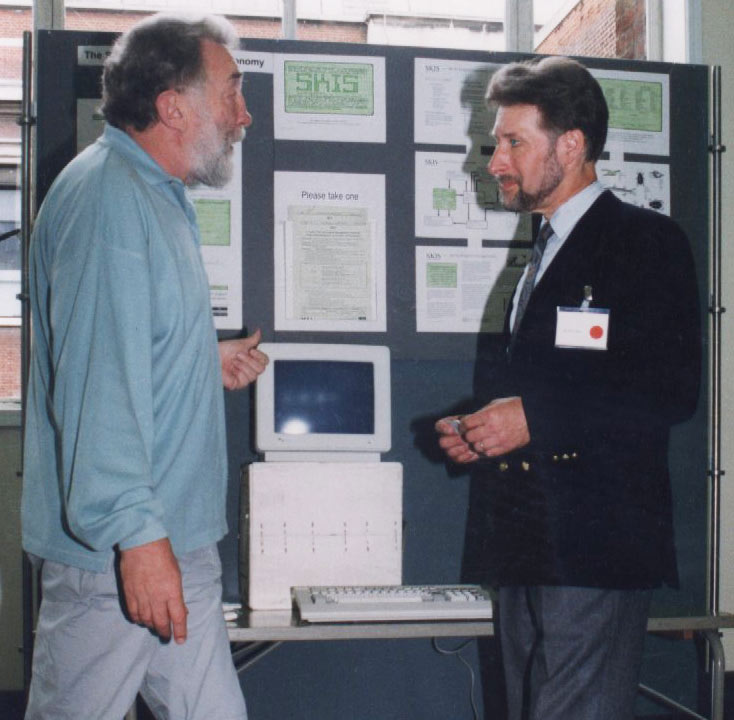BioLists.com
3/ ACTION
This IPBES study (as above) promises to be a game-changer led by recent discoveries of horrendously diminishing biodiversity worldwide - a 58% reduction globally in the numbers of wild animals in just the 40 years since 1970. Hidden by over-riding concerns over once-and-forever extinctions, researchers now talk of 'biological annihilation' as studies reveal a more potent route towards environmental collapse - "billions of populations" of wild vertebrate animals have significantly thinned or been lost in recent decades. Many corroborating accounts are now coming from around the world. Where I live, often referred to as the wildlife capital of New Zealand, I see slow biodiversity declines - too slow for most people to notice. This can add up to annihilation.

Along with Prof. David Bellamy, please note my poster paper labelled "SKIS" (forerunner of the BioLists System) at the Convention on Biological Diversity [CBD] meeting in London's Natural History Museum,1992. A lecture meeting and associated conversazione were held for the delegates returning from the International (Rio) Conference to Save the Environment and to rejoice at its success.
While the "big picture" has punch, Robin Freeman points to an important perspective: "While looking at things on aggregate is interesting, the real interesting nitty gritty comes in the details." So we're back to seeing the fundamental importance of local natural history to kick start the vital science bandwagon.
Since publication of the above accounts of extinctions, and being similarly three years in the research phase, another mightily disturbing 1700-word paper was published by Science Magazine, 29-June-2018. In it, Prathapan et al. and 172 contributors point out one way in which the vital sciences, if not all humanity and more, has been badly let down. Exposed in stark detail, it lists numerous examples of the dumbing down of both taxonomy and conservation by a score or so of [named] high-level organisations associated with the UN-Convention on Biological Diversity (CBD).
Similarly, from twenty years earlier, I can recall the global "big bang" of the Stockholm Conference on the Environment (1972). That one inspired me, a freshwater ecologist, to live in Libya for five years doing freshwater natural history (in addition to university zoology and fisheries work among wonderful people). Now we find that some of the business and politics of the CBD has been undermining important aspects of its key stated intention - to preserve nature. Certainly, necessary support for taxonomy and in-depth conservation has waned beteen 1992 and today; BioLists should help the recovery.
Perhaps this CBD exposee could become good news to boost the Vital Sciences if, as a consequence of this about face, remedies are put in place to help counteract the damage done to the standing of taxonomy and conservation. Then, great efforts might be made to rehabilitate habitats and prevent further damage to nature. First, to shift the scientific culture closer to nature, I would recommend quickly training eager students who have been raised in poor (not impoverished) families in, for example, remote villages - or anywhere where nature still triumphs over affluence. Another fail-safe way, time permitting, would be to give back academic freedom (no bureaucrats in the way) in exchange for a new breed of vital scientists accepting high levels of responsibilities as they aim for spectacular achievements.
And here's a tool they might use to achieve results far beyond today's expectations - BioLists. I declare an intellectual interest in the design and development of the BioLists System free from any academic, bureaucratic or monetary influences over three decades. This was the only possible way to go against the hidden high-level trend.